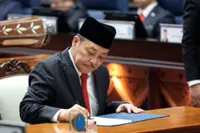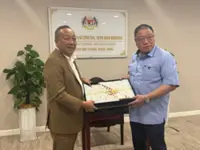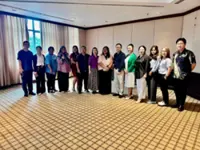KOTA KINABALU: Beyond attracting nature lovers, Sabah’s rare and spectacular Rafflesia flowers can empower rural communities by turning conservation into opportunity.
Conservationist and Borneo Eco Tours managing director Albert Teo has proposed that villagers near natural Rafflesia sites manage and guide visitors, making the flower a community-led eco-tourism product.
He raised this proposal during a recent meeting with Assistant Tourism, Culture and Environment Minister Datuk Joniston Bangkuai, noting that the rafflesia’s rarity and brief blooming period make it an exclusive draw for eco-conscious travellers.
“There are already rafflesia species growing near kampungs (villages). With basic infrastructure and training, locals could host guided treks and educate visitors while protecting a fragile part of their natural heritage,” Teo said.
He also proposed creating a Rafflesia Community Alliance, a network of villages with access to known rafflesia sites, to encourage collaboration and strengthen local ownership.
Bangkuai, who is also Sabah Tourism Board chairman, welcomed the proposal and said the state government supports tourism models that engage local communities, especially when they involve Sabah’s natural and cultural heritage.
“The rafflesia has long been a symbol of Sabah’s biodiversity. It is time to identify kampungs that can benefit from this while ensuring responsible and sustainable tourism practices,” he said.
He added that the board would explore mapping known rafflesia sites near villages, particularly in Tambunan, Ranau, and along the Crocker Range, areas already popular for nature-based tourism.
“Empowering locals fosters long-term conservation. When people see value in protecting something, they take ownership. That’s how we build sustainability and pride,” Bangkuai said, aligning the idea with Sabah’s Culture, Adventure and Nature (CAN) tourism approach.
Sabah is home to three of the world’s 15 known rafflesia species: Rafflesia keithii, Rafflesia pricei, and Rafflesia tengku-adlinii.
The latter, the rarest of the three, is named after Datuk Seri Tengku Zainal Adlin Tengku Mahamood, a key figure in Sabah’s tourism and conservation movement.







